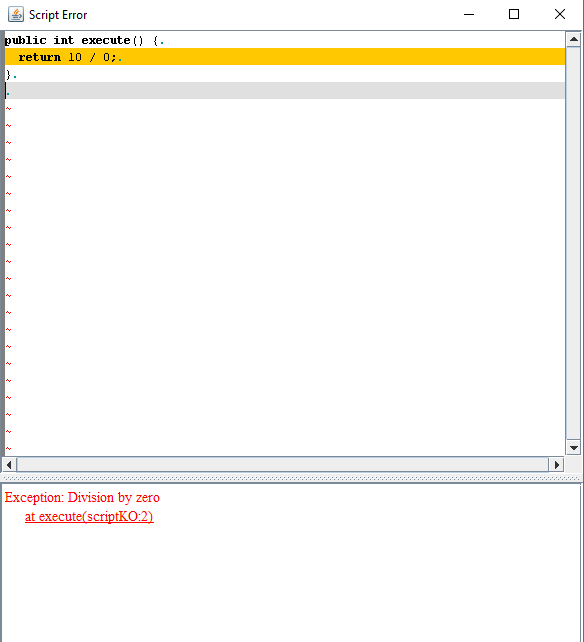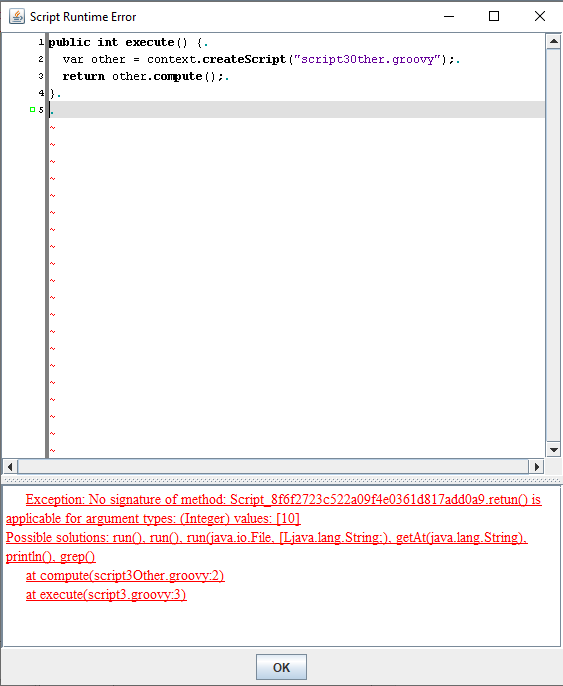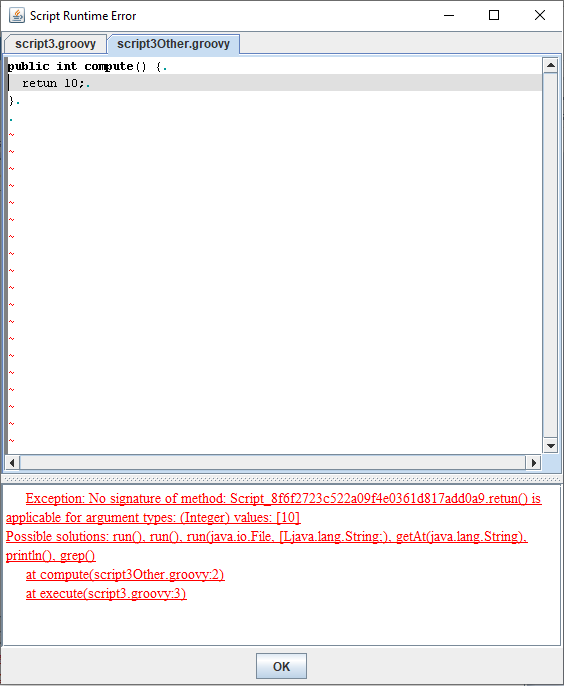Showing exceptions in swing
1 Behavior of the error window
2 Showing StackTraces where the main script calls other scripts
3 See also
2 Showing StackTraces where the main script calls other scripts
3 See also
Exceptions StackTrace are handled by the SwingExceptionListener class.
To show the exceptions in a Swing window, just use the following:

StackTraces are also shown and clicking on a StackTrace element allows to go to the associated line in the script. For example:


If the main script uses an additional script, the StackTrace of the exception will present the appropriate script for each element in the StackTrace.
For example if you have the following groovy script: And our Groovy script file:

And when clicking on the

To show the exceptions in a Swing window, just use the following:
ScriptWrapper<Script> wrapper = new GroovyScriptWrapper() { } ... SwingExceptionListener listener = new SwingExceptionListener(); wrapper.addExceptionListener(listener);Then the first exception encountered during the compilation or execution of the script will popup the following window, for example:

StackTraces are also shown and clicking on a StackTrace element allows to go to the associated line in the script. For example:

Behavior of the error window
By default the error window will not reappear in the script session but the next error message will only be shown in the logger. However it is possible to configure theSwingExceptionListener so that all exceptions will trigger the apparition of the error window by:listener.resetWrapperOnDispose(true);In this case, the window will show a "dismiss" option for quitting the widnwo to allow to reset to the default behavior:

Showing StackTraces where the main script calls other scripts
Main Article: Calling an additional script
If the main script uses an additional script, the StackTrace of the exception will present the appropriate script for each element in the StackTrace.
For example if you have the following groovy script: And our Groovy script file:
public int execute() { var other = context.createScript("otherScript.groovy"); return other.compute(); }and the
otherScript.groovy code:public String compute() { retun 10; }The error window will be:

And when clicking on the
compute hyperlink:
See also
- Swing utility classes: This article xplains how to integrate the script framework in swing
- Swing tutorial: This tutorial shows how to integrate the library in a swing application
×
![]()
Categories: swing